📈 Data-Driven Legal Wins: Shift perceptions & secure more resources. Download our free guide today.

Contact us
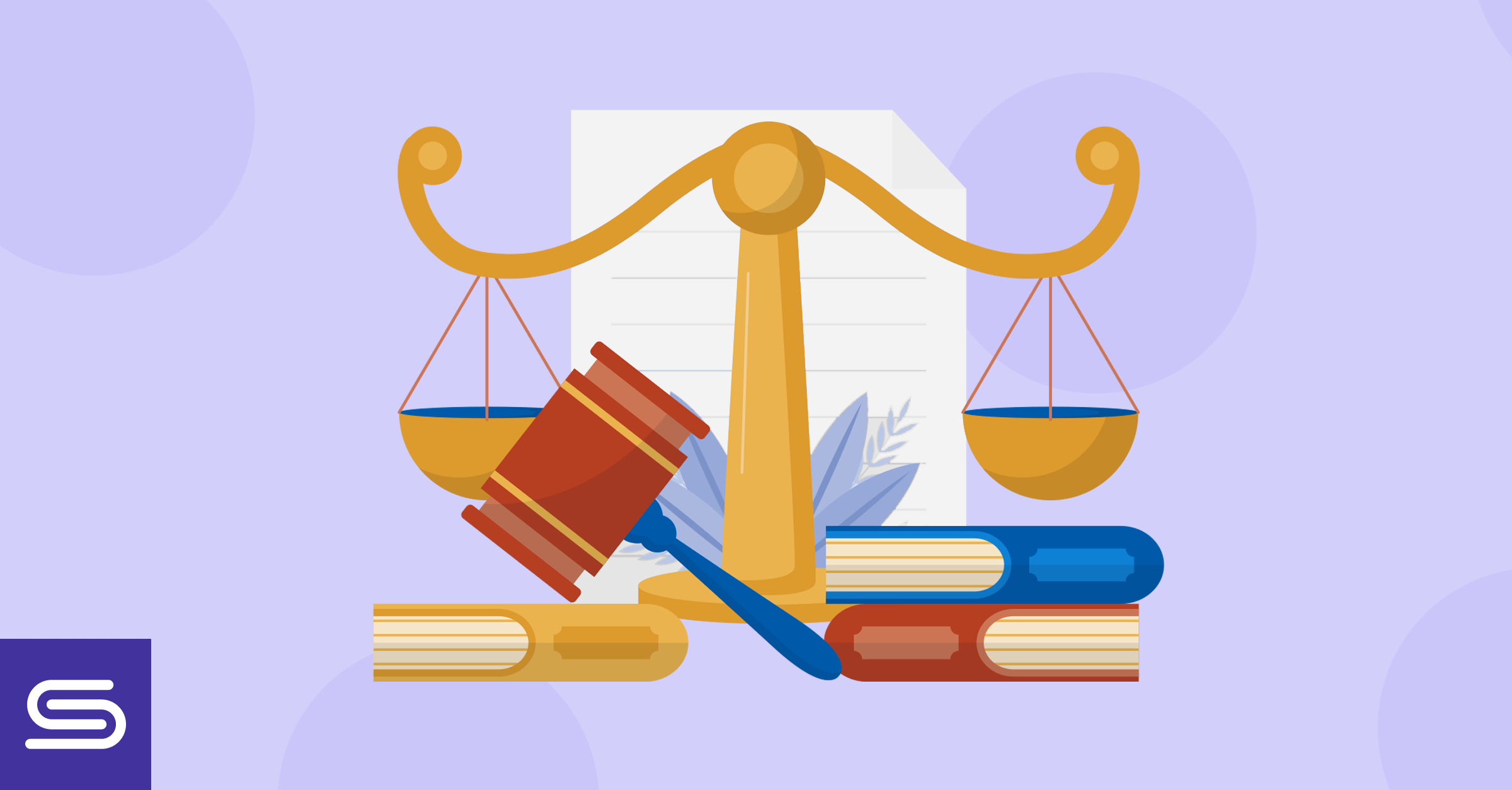
If you're drowning in administrative tasks instead of focusing on strategic legal work, you need to read this. Legal teams everywhere struggle with scattered processes that waste time and create bottlenecks.
Indeed, managing legal requests can feel like trying to organize a flood of emails, documents, and urgent deadlines all at once. Fortunately, legal workflow management software can transform this chaos into clarity, allowing you to regain hours each week to focus on what matters most.
Legal workflow management software is a platform that automates and organizes the flow of legal work, transforming scattered requests, emails, and manual processes into a structured and efficient system. Instead of juggling multiple communication channels and tracking requests in spreadsheets, you get one centralized hub to capture, route, and track every legal request from start to finish.
Think of it as your legal department's front door. When business stakeholders require legal assistance, they do so via a single entry point. The software captures their request, gathers necessary information upfront, and automatically routes it to the right person based on predefined rules.
At its core, legal workflow management software handles four main functions:
Intake refers to the process of collecting requests through various channels, including forms, email integrations, and other methods. Routing involves automatically assigning work to the appropriate team member based on their expertise, capacity, or the type of request.
Tracking provides real-time visibility into request status and progress. Reporting generates insights about volumes, turnaround times, and team performance.
For more information on how automation and AI can modernize legal operations, click on the link and learn how emerging technologies complement workflow platforms like Streamline AI.
Legal workflow management software falls into distinct categories, each designed to solve specific operational challenges. Understanding these different types helps you select the right solution for your team's needs.
Matter management systems organize your entire portfolio of legal work, from litigation cases to corporate transactions. These platforms create a centralized repository where every legal matter has its own workspace containing relevant documents, communications, timelines, and team assignments.
They feature automated task lists that adapt to different matter types, budget tracking that monitors spend against estimates, and collaborative workspaces where internal and external counsel share updates. These systems can also include conflict checking to ensure your team doesn't take on matters with competing interests.
Law firms handling complex litigation use matter management to track discovery deadlines, coordinate expert witnesses, and manage document productions.
Corporate legal departments rely on these systems to oversee regulatory investigations, intellectual property portfolios, and mergers and acquisitions (M&A) transactions. The software automatically generates status reports and sends alerts when critical deadlines approach.
Bottom line: Matter management systems centralize all legal work in one organized hub, improving visibility, collaboration, and control.
CLM tools handle contracts from initial request through execution and renewal. These specialized platforms automate contract creation using clause libraries, route agreements through approval workflows, and track obligations after the contract is signed.
The workflow begins when someone requests a contract. The CLM system guides them through a questionnaire that determines contract type and captures key terms.
Based on their answers, the platform assembles the appropriate clauses, flags non-standard terms for review, and routes the draft to the relevant stakeholders. Legal teams establish rules that automatically escalate high-value contracts or contracts with unusual terms to senior counsel.
Post-signature features distinguish CLM tools. The software extracts key dates and obligations, sending reminders before renewals or milestone deadlines. Analytics dashboards reveal which contract types take the longest to negotiate, which clauses cause friction, and where bottlenecks occur in your approval process.
The bottom line is that CLM tools streamline the entire contract journey, improving teams' speed, compliance, and visibility.
Legal request management platforms serve as the single entry point for all incoming legal work, which explains why they are also known as the Legal Front Door. Rather than fielding requests through email, chat, and hallway conversations, these systems channel everything through structured intake forms that capture necessary information upfront.
Smart routing logic evaluates each request and assigns it to the right legal professional based on expertise, current workload, and priority rules you define.
For example, a marketing compliance review automatically goes to your regulatory specialist, while employment matters route to your labor counsel. The platform tracks service level agreements, sending alerts if requests risk missing deadlines.
These platforms eliminate the back-and-forth that often delays legal work. When someone submits a request missing critical information, the system prompts them to provide it before adding the request to the queue.
Requesters receive automatic updates on status changes, reducing the need for follow-up emails. Legal teams gain visibility into request volumes, common issues, and capacity constraints.
Bottom line: Legal request management platforms bring structure to the intake process, ensuring every request is routed, tracked, and completed efficiently.
Document automation software transforms how legal teams create routine documents. Instead of using outdated templates and manually updating fields, you can create dynamic templates that retrieve information from your systems and adapt based on user inputs.
Template libraries should contain your standard agreements, policies, and legal forms with embedded logic, ensuring seamless integration and consistency.
When generating a services agreement, the system includes appropriate jurisdiction clauses based on the vendor's location, adds data protection terms for vendors handling personal information, and adjusts payment terms according to the contract value. Version control ensures everyone uses current templates while maintaining an audit trail of changes.
Conditional logic shows or hides entire sections based on deal parameters. Integration with your other systems pulls in accurate party information, reducing typos and inconsistencies. Approval workflows ensure that documents undergo appropriate review before being sent out, with different paths for standard versus modified terms.
Bottom line: Document automation eliminates manual drafting and reduces errors, freeing legal teams to focus on higher-value work.
Legal operations platforms combine multiple workflow capabilities into unified solutions. Rather than maintaining separate systems for matter management, document automation, and spend tracking, these platforms handle all aspects of legal operations.
Analytics and reporting capabilities set these platforms apart. You can see how work flows through your department, where bottlenecks form, and which practice areas consume the most resources.
Dashboards track key performance indicators like average turnaround time, cost per matter, and outside counsel efficiency. Predictive analytics help forecast future workload and budget needs based on historical patterns.
Integration is more straightforward with an all-in-one platform. Your intake forms feed directly into Matter Workspaces, which connect to document generation and time tracking. Financial data flows seamlessly from time entries to invoices to budget reports.
Team members work in a single system, rather than jumping between multiple tools, while leadership gains holistic visibility across all legal operations.
Bottom line: Legal operations platforms unify all your workflows in one place, connecting data, people, and processes for complete operational insight.
Legal workflow management software eliminates the repetitive tasks that consume your day. Instead of manually forwarding emails, updating spreadsheets, and chasing down approvals, automated workflows handle these routine handoffs instantly.
When a contract request arrives, the system captures it, routes it to the right reviewer, notifies stakeholders, and tracks progress without manual intervention.
Document generation alone accounts for significant efficiency gains. Rather than spending 30 minutes customizing a standard NDA, automated templates produce the same document in under two minutes.
Multiply that across hundreds of routine documents each month, and you'll save dozens of hours. Add in automated status updates, approval routing, and deadline tracking, and the administrative time savings become transformative.
Real-time dashboards transform legal departments from opaque to transparent operations. You see every active request, its current status, who's working on it, and when it's due. Business stakeholders can check progress themselves instead of interrupting lawyers with status inquiries. Leadership gains instant insight into workload distribution, bottlenecks, and team capacity.
This visibility goes beyond status tracking. Heat maps show which departments generate the most requests and what types of work consume the most time. Trend analyses reveal seasonal patterns, enabling you to staff appropriately during busy periods. You can drill down into individual matters for details or zoom out to view department-wide metrics that inform strategic decisions.
When stakeholders see exactly where their request stands and understand the volume of work flowing through the legal department, they develop realistic expectations.
They stop seeing delays as a result of legal being unresponsive and start recognizing when genuine capacity constraints exist. This transparency builds trust and positions legal as a professional operation rather than a mysterious bottleneck.
Automated routing ensures requests reach the right person immediately. No more emails sitting in someone's inbox while they're out of office or requests going to attorneys without the right expertise.
The system evaluates each request and assigns it based on your rules, contract value, subject matter, requester department, or current workload. High-priority items automatically jump to the front of the queue.
Service level agreement (SLA) tracking keeps everyone accountable. You set target turnaround times for different request types: 24 hours for standard NDAs, 3 days for vendor agreements, and 1 week for complex contracts.
The system monitors progress against these targets, sending alerts before deadlines and escalating overdue items. Performance reports show which request types consistently meet SLAs and where delays occur.
Speed improvements are measurable and significant. Legal teams usually see 50-70% faster turnaround times after implementing workflow management. Standard document requests that took 3-5 days can now be completed in hours.
Complex matters move faster, too, as automated task assignments and deadline reminders keep multi-step processes on track. Business partners notice the difference immediately, leading to improved satisfaction scores and fewer escalations.
Consistent intake procedures ensure you collect the correct information upfront, every time. Whether requests are submitted through email, a portal, or a chat integration, they follow the same structured process.
Dynamic forms adapt based on request type, showing relevant fields and hiding unnecessary ones. A litigation hold request prompts for case details and custodian information, while a marketing review asks about campaign channels and target audiences.
Standardization reduces errors and rework. When every NDA follows the same review process, you consistently catch problem issues. When all contract requests include budget information upfront, you avoid delays from missing data.
New team members onboard faster because they learn one consistent process rather than multiple individual approaches. Quality improves as best practices become embedded in your workflows rather than relying on individual knowledge.
Compliance becomes simpler when processes are standardized and auditable. Every request leaves a digital trail that shows who handled it, what decisions were made, and when actions were taken.
Regulatory audits that once required days of document gathering can now be generated with a few clicks. You can prove consistent handling of data privacy requests, demonstrate timely responses to subpoenas, and show adherence to internal policies.
Analytics help reveal patterns invisible in day-to-day work. These insights inform staffing decisions, training priorities, and process improvements.
Request volume trends help you plan resources proactively. Historical data shows when busy seasons occur, which departments' growth drives more legal work, and how new regulations impact the types of requests.
You can model scenarios. For instance, if sales grow by 20%, how many more contracts will the legal team handle? If you launch in a new market, what compliance work follows? This forecasting helps justify headcount requests and budget allocations with concrete data.
Resource allocation insights optimize how you deploy your team. Analytics reveal which attorneys handle specific work most efficiently, where cross-training can help balance workloads, and when to engage outside counsel.
You are better able to spot attorneys consistently exceeding capacity before they burn out. You can identify routine work that junior personnel could handle, freeing senior counsel for complex matters. Performance metrics shift discussions from anecdotal impressions to objective data about productivity, efficiency, and value delivery.
Legal workflow management software operates through a connected set of processes that streamline the movement of legal requests through your organization. The platform functions as a central hub that captures, processes, and tracks all legal work from initial request to completion.
Every workflow begins when someone in the business needs legal assistance. Instead of sending unstructured emails, they submit a request through customizable intake forms tailored to the type of support they need. For example, a contract review form will display different fields than a trademark application or a compliance question.
To better understand how this process works, learn more about what legal intake is and why it’s essential for modern legal teams to reduce bottlenecks, enhance collaboration, and ensure that every request begins with complete information.
Email integrations capture messages sent to legal@company addresses, automatically parsing key details and creating new tickets in the system. Popular tools like Slack and Microsoft Teams connect directly, allowing employees to submit legal requests without leaving their workspace.
Once a request enters the system, automation takes over. Machine learning and rule-based logic determine the type of work, urgency, and required expertise. Natural language processing scans attached documents to extract details like party names, key dates, and contract values.
High-value contracts automatically trigger executive reviews, while standard NDAs follow preapproved workflows. This smart triage ensures that every request follows the proper process from the start, saving time and reducing manual oversight.
Routing happens automatically based on predefined rules and real-time workload visibility. The software maintains profiles of each legal team member, including their expertise, bandwidth, and availability.
When an employment issue arises, it routes directly to your labor specialist. A complex IP licensing agreement goes to the attorney with the right background, and so on. This dynamic routing keeps workloads balanced and ensures that no single person is overwhelmed while others remain underutilized.
After routing, the platform breaks each matter into actionable tasks: document review, approvals, revisions, and final execution. Team members receive automatic notifications through their preferred communication channel.
Built-in collaboration spaces enable multiple users to work simultaneously, while version control and audit trails ensure accuracy and compliance. Everyone stays aligned, and no updates are lost in email threads.
Progress tracking replaces manual follow-ups with clear, visual dashboards. Each request is color-coded by stage, owner, and due date, showing whether it’s on track or delayed.
Automated status updates are sent to business stakeholders at key milestones, such as when the review begins, when approval is complete, or when additional input is required. This transparency reduces the need for check-in meetings and improves internal communication.
The reporting engine continuously analyzes workflow performance to uncover actionable insights. Standard reports show volumes, turnaround times, and SLA compliance.
Advanced analytics identify trends such as which clauses delay negotiations, what times of day see peak requests, and how workload is distributed across practice areas. These insights enable legal operations to refine routing logic, rebalance staffing, and continually improve efficiency.
Legal workflow management software connects seamlessly with your existing tools. Document management systems store final versions, contract lifecycle management platforms handle renewals, and e-billing software automatically pulls time entries.
Instead of replacing your technology, let it be the connective tissue that unites your systems into one cohesive ecosystem, making every part of the legal process faster, more transparent, and more efficient.
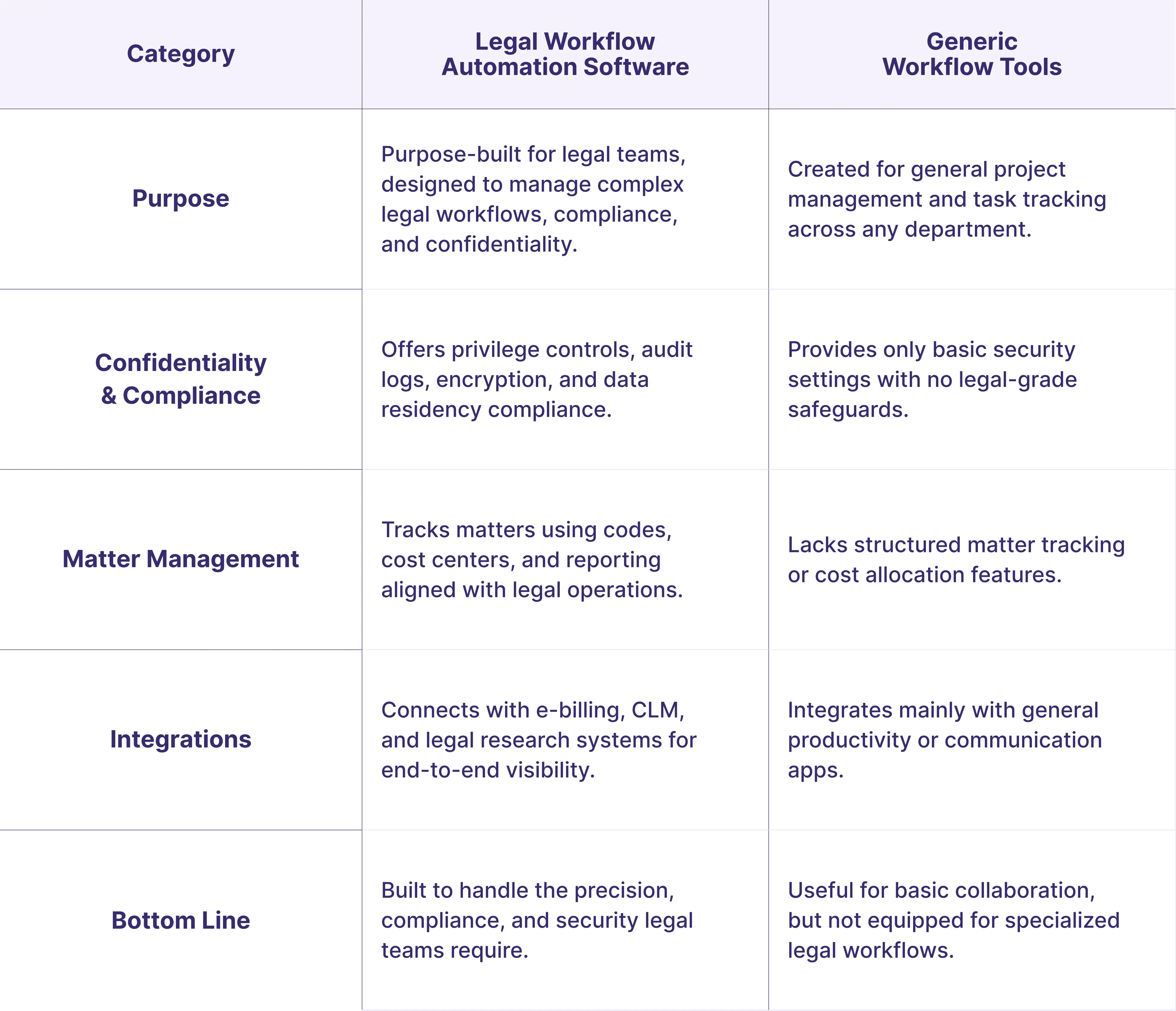
Generic workflow tools might seem like an easy solution for legal teams looking to automate processes. After all, platforms like Monday.com, Asana, or Trello handle task management and team collaboration well. Yet legal departments often discover these tools fall short when managing the unique complexities of legal work.
Legal workflow automation software understands that every legal request carries specific requirements that generic tools can't accommodate. Matter codes organize work for accurate cost allocation and reporting, which is something project management software isn't designed to track.
Privilege designations protect attorney-client communications, but generic tools lack the granular permission controls to maintain confidentiality. Conflict checking prevents ethical violations by screening new matters against existing clients and adversaries, a feature missing in standard business software.
Security and compliance features reflect the heightened requirements of legal work. Legal workflow platforms encrypt data at rest and in transit, maintain detailed audit logs for regulatory reviews, and support data residency requirements for different jurisdictions.
Generic tools may offer basic security, but they don't anticipate scenarios such as litigation holds, where specific data needs to be frozen from deletion, or chain-of-custody tracking for evidence management.
Integration ecosystems differ between legal and generic platforms. Legal workflow software connects seamlessly with e-billing systems that track time in six-minute increments, contract lifecycle management platforms that monitor post-execution obligations, and legal research databases that link case law to active matters.
These specialized integrations speak the same language as your other legal tools, automatically sharing matter numbers, client codes, and practice area designations.
Implementing legal workflow management software requires a structured approach to minimize disruption while maximizing adoption. The process can take 8-12 weeks; however, complex organizations may require additional time for enterprise-wide rollouts.
Start by documenting how work moves through your legal department. Follow a typical request, such as a vendor contract, from initial submission to final approval. Identify every step, handoff, and delay along the way.
Focus first on high-volume, repetitive work such as NDAs and standard agreements. Calculate the time each process takes, including the time spent gathering any missing details. Use this data as your baseline for measuring future improvements.
Create visual workflows that show decision points and participants. Highlight where bottlenecks appear, such as approvals stuck in finance or overloaded reviewers. These pain points will help you prioritize what to automate first.
Before implementing anything, define what success looks like. Measure turnaround times, request volumes, and communication frequency. Set realistic targets, like cutting NDA turnaround from five days to three.
If you need to measure performance, review these sample legal department KPIs to see practical metrics that help legal teams track efficiency, workload balance, and business impact.
Track both operational metrics (SLA compliance, requests per attorney) and satisfaction scores (internal NPS, requester feedback). Measuring progress consistently keeps everyone aligned and shows leadership the value of automation.
Design intake forms that collect the correct data without overwhelming users. Keep forms dynamic so they change based on request type. For example, vendor agreements can display payment fields, while employment requests show HR-related ones.
Create routing rules that align with your team’s expertise and workload. For example, you can route contracts over a certain value to senior counsel or send urgent matters to a dedicated queue. Test these rules thoroughly before launch to avoid misrouted work.
Connect your workflow platform to existing tools like email, document management, CLM, and e-billing systems. Each integration removes manual steps and ensures data consistency across platforms.
Prioritize integrations that save the most time or process the highest volume of data. Test all data flows before launch to ensure that permissions, matter numbers, and updates sync correctly.
Train legal teams and business users separately. Legal staff should learn about automation rules and reporting, while business users only need guidance on submitting and tracking requests. Provide short videos, screenshots, and FAQs that users can access at any time.
Start with a pilot project: something simple yet impactful, such as NDAs or vendor agreements. Gather feedback quickly, fix issues fast, and expand in phases. Share success stories to encourage adoption across departments and promote a culture of collaboration.
Modern legal workflow management software offers far more than task tracking. The right platform combines automation, accessibility, analytics, and security to help legal teams work more efficiently and effectively. Here are the key features to look for when evaluating solutions.
A no-code workflow builder gives legal teams full control over their processes. With drag-and-drop functionality, you can design and adjust approval chains, routing rules, and task sequences without IT support.
When regulations change or team structures shift, workflows can be updated in minutes, keeping operations agile and compliant.
Artificial intelligence transforms how requests are managed. AI algorithms read new submissions, identify the type of assistance required, and extract details such as parties, dates, and contract values.
Over time, the system learns from user input, improving accuracy. Automated routing directs each request to the most suitable attorney based on their expertise and workload, thereby reducing manual sorting and associated delays.
Mobile access ensures that legal work can continue regardless of where you are. You can review contracts when commuting, approve urgent requests between meetings, or monitor workloads on the go.
Top platforms offer full functionality on smartphones and tablets, not just limited mobile views, with push notifications and offline syncing for uninterrupted productivity.
Comprehensive reporting tools turn workflow data into actionable insights. Real-time dashboards display request volumes, turnaround times, and workload distribution across teams. Custom reports help legal leaders track KPIs, identify bottlenecks, and present metrics to executives.
With clear visualizations, your department can continuously improve efficiency and demonstrate business impact.
Security is non-negotiable in legal operations. The best platforms utilize enterprise-grade protection, including SOC 2 Type II certification, role-based access controls, and detailed audit logs. Data encryption safeguards sensitive information, ensuring compliance with privacy and regulatory standards.
Strong integration capabilities prevent data silos. Look for workflow software that connects seamlessly with document management systems, e-billing platforms, and contract lifecycle management tools.
Pre-built connectors for Salesforce, NetSuite, and Microsoft 365 accelerate setup, while open APIs allow custom connections to internal systems.
Scalable platforms grow with your organization. Cloud-based architecture supports higher request volumes without slowing performance. Flexible licensing models make it easy to add users as your team expands, while multi-language and regional compliance features support global legal departments.
A clean, intuitive interface helps new users get started quickly without long training sessions. Context-sensitive help, clear visual cues, and consistent navigation make the system approachable for both legal professionals and business users. When people can use the software effortlessly, adoption happens naturally.
As legal teams modernize, selecting the right workflow platform becomes critical. Below are five contenders in 2026 with a brief snapshot of what they offer, where they excel, and what trade-offs to watch.
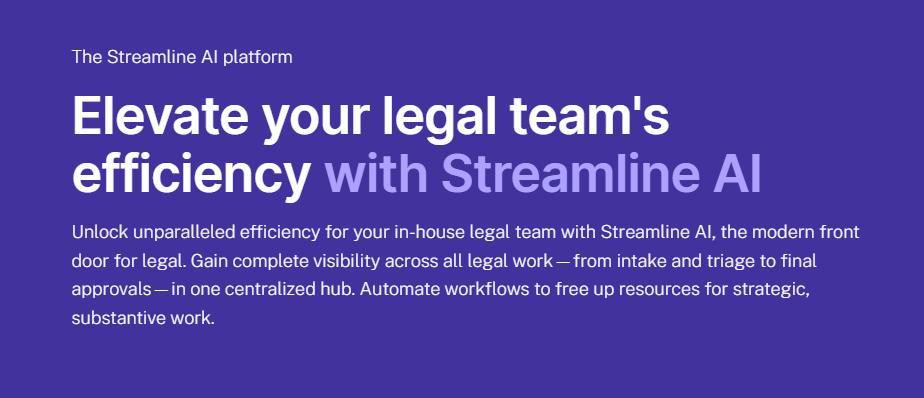
Streamline AI is built specifically for in-house legal teams. It provides no-code workflows, intelligent request triage, and a unified hub for matter management and approval.
You get robust legal-centric controls like privilege protection, audit trails, and conditional workflows without needing IT. It integrates with email, Slack, Salesforce, and legal systems to reduce change management friction.
Because it is tailored, very custom enterprise integrations may require additional development. Pricing is not publicly available; please contact sales for exact figures.

Filevine is a cloud-based platform that combines case management with workflow automation, document handling, and AI features.
Strong automation and flexibility, with features for collaboration, task workflows, and document management. Well-suited for litigation or complex matters.
Pricing is customized and can be high. Some users note the learning curve and complexity for smaller teams.
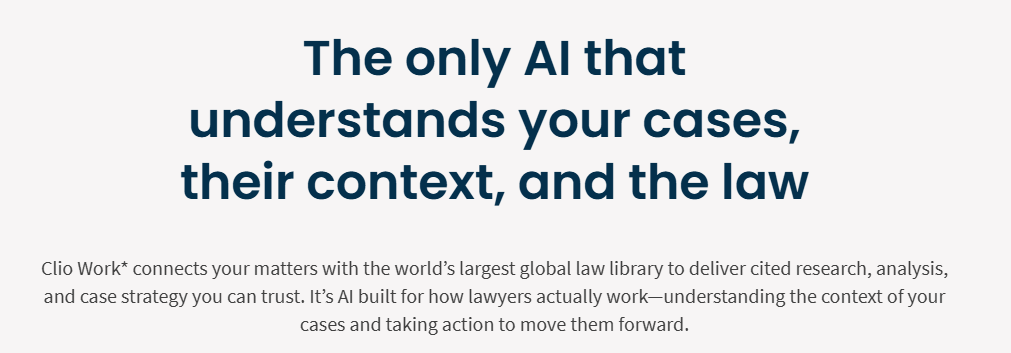
Clio is a legal practice management software known for strong integrations, case tracking, billing, and workflow tools.
Large ecosystem of integrations (250+), user-friendly for small to mid-sized firms, good support resources, and transparent pricing.
Less built for enterprise in-house legal complexity. Its workflow features may lag behind specialized legal automation tools.
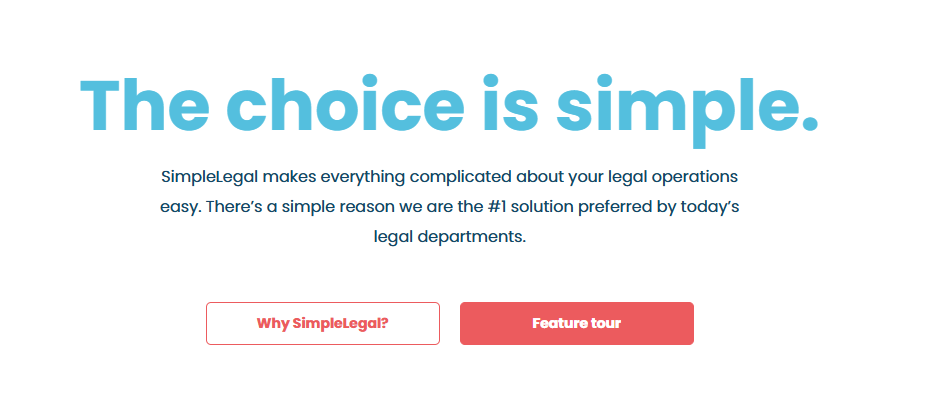
SimpleLegal is purpose-built for in-house legal departments. It offers matter management, spend tracking, and reporting in one platform.
Designed for corporate legal teams rather than law firms, it connects intake, e-billing, and vendor management to give full visibility into workload and costs.
Customization is limited compared to enterprise systems like Onit. Implementation may require change management support for larger teams.

Onit provides enterprise-grade workflow automation for legal operations, focusing on end-to-end visibility and integration across departments.
Highly configurable workflows and AI-powered insights built for scaling in-house teams. Integrates deeply with CLM, ERP, and HR systems.
More complex to deploy and may require IT involvement for custom automations.
Workflow automation is no longer a luxury; it is a necessity. Legal teams seeking to go to the next level will be those that utilize technology to strike a balance between precision and speed, visibility and control, and efficiency and compliance.
Legal workflow management software delivers exactly that balance by transforming the daily flood of requests into an organized, transparent, and data-driven process.
Whether your goal is to reduce administrative load, accelerate contract turnaround, or establish measurable performance metrics, the right platform provides the infrastructure to scale without burnout.
Automation handles the routine work, analytics provide the insights, and integrations keep your entire tech stack working together seamlessly. The result is a legal team that operates with the speed of a business function and the rigor of a law firm.
If your department is still managing requests through email chains and spreadsheets, now is the time to modernize your processes. Streamline AI is built for in-house legal teams and offers unmatched, powerful automation, no-code customization, and real-time visibility across every request and matter.
Ready to see what a modern legal workflow looks like? Book a demo with Streamline AI and start transforming your legal operations today.
Legal workflow management software handles the entire spectrum of legal work by automating intake, routing, and tracking of all request types. Contract Lifecycle Management (CLM) tools focus specifically on the contract journey from creation through renewal. Many legal teams use both: workflow software as the central hub for all requests, and CLM for deep contract-specific functionality.
Most implementations take 8-12 weeks for standard deployments, although complex, enterprise-wide rollouts may require more time. The process includes mapping current workflows, configuring intake forms and routing rules, integrating with existing systems, and conducting phased training.
Yes, modern legal workflow platforms feature no-code workflow builders with drag-and-drop functionality. Legal teams can design and modify approval chains, routing rules, and task sequences independently. When regulations change or team structures shift, workflows can be updated in minutes, keeping your operations agile without creating IT bottlenecks or delays.
Start by establishing baseline metrics before implementation: current turnaround times, request volumes, hours spent on administrative tasks, and requester satisfaction scores. After implementation, track operational improvements (SLA compliance, reduced cycle times), efficiency gains (time saved per request type), and stakeholder satisfaction.
Scale your legal team's efficiency and effectiveness with modern workflow automation tools designed for in-house legal.